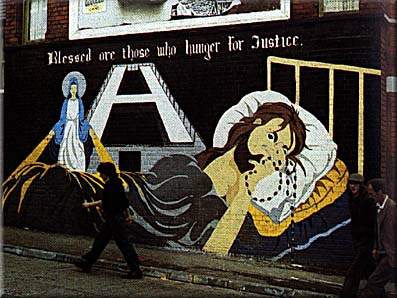Trigger warning: this blog posting discusses the rape of women and young girls.
Important update, 24.11.15 – please read the note at the end of this blog posting before clicking the links in the references.
The New York Times published a horrific story by Rukmini Callimachi on 13. August entitled ‘ISIS Enshrines a Theology of Rape: Claiming the Quran’s support, the Islamic State codifies sex slavery in conquered regions of Iraq and Syria and uses the practice as a recruiting tool’. The story details the ways in which Islamic State fighters have sought to systematically carry out a programme of rapes and sexual violence against women and girls, opening with an account of the rape of a 12 year-old girl. The IS fighter explained to her that ‘according to Islam he is allowed to rape an unbeliever. He said that by raping me, he is drawing closer to God.’ Similar stories have been published elsewhere, for example, by Richard Spencer in the Daily Telegraph last October.
The women and girls affected are from the Yazidi minority, who were in the news a year ago when stranded on Mount Sinjar; since then, the mainstream Western media seems to have largely forgotten about them. However, IS has, according to the NYT, developed a ‘detailed bureaucracy of sex slavery’ and provided theological legitimation for raping Yazidi women and girls. Yazidis are a long-standing Kurdish minority, whose practices go back to Zoroastrianism and other traditions, including Islam; they have incorrectly been described as ‘devil-worshippers’ by Westerners in particular. The NYT suggests Islamic State’s misunderstanding of them as polytheistic is in part the basis for their treatment, as is the fact that they are not regarded as ‘people of the Book’ in the way that Jews and Christians are (unfortunately, the NYT doesn’t explictly correct this misunderstanding of Yazidi monotheism/polytheism):
… the Islamic State made clear in their online magazine [Dabiq] that their campaign of enslaving Yazidi women and girls had been extensively preplanned.
“Prior to the taking of Sinjar, Shariah students in the Islamic State were tasked to research the Yazidis,” said the English-language article, headlined “The Revival of Slavery Before the Hour,” which appeared in the October issue of Dabiq.
The article made clear that for the Yazidis, there was no chance to pay a tax known as jizya to be set free, “unlike the Jews and Christians.”
The NYT notes that justifications for the treatment of the captured Yazidis come from certain interpretations of the Qur’an and the Sunna, explaining that,
Scholars of Islamic theology disagree, however, on the proper interpretation of these verses, and on the divisive question of whether Islam actually sanctions slavery.
This is somewhat disingenuous, since today, apart from those connected to IS, the systematic enslavement and rape of prisoners is not really a serious topic of discussion for Muslims. Jews and Christians have similar texts in their scriptures (written much earlier, of course, than the Qur’an), for example:
Deut 21: 10-14: When you go out to war against your enemies, and the Lord your God hands them over to you and you take them captive, suppose you see among the captives a beautiful woman whom you desire and want to marry, and so you bring her home to your house: she shall shave her head, pare her nails, discard her captive’s garb, and shall remain in your house a full month, mourning for her father and mother; after that you may go in to her and be her husband, and she shall be your wife. But if you are not satisfied with her, you shall let her go free and not sell her for money. You must not treat her as a slave, since you have dishonored her.
Num 31: 14-18: Moses became angry with the officers of the army, the commanders of thousands and the commanders of hundreds, who had come from service in the war. Moses said to them, “Have you allowed all the women to live? These women here, on Balaam’s advice, made the Israelites act treacherously against the Lord in the affair of Peor, so that the plague came among the congregation of the Lord. Now therefore, kill every male among the little ones, and kill every woman who has known a man by sleeping with him. But all the young girls who have not known a man by sleeping with him, keep alive for yourselves.
Of course, there will be almost no Jews or Christians today who would regard these texts as acceptable guidelines for dealing with prisoners of war, and for the NYT to even suggest that Muslims today are seriously discussing whether similar passages from the Qur’an allow such things, rather than that a tiny proportion of Muslims connected to Islamic State are doing so, does not really help anyone – Muslim or not – better understand contemporary global discourses amongst Muslims.
Asking better questions about IS might also help understand IS better: for example, Jason Burke notes ‘Isis is a hybrid of insurgency, separatism, terrorism and criminality, with deep roots in its immediate local environment, in broader regional conflicts and in geopolitical battles…’ – surely this is more helpful in understanding IS than trying to shoehorn a tiny minority opinion about Qur’anic texts into a wider discourse amongst Muslims globally?
More broadly, of course, most people would agree that blind adherence to any text without appropriate understanding of its context and historical significance is evading the responsibility to think for oneself, resulting in an abdication of an individual’s humanity. One of the outcomes of such thinking can be seen in the terrible fate of the Yazidi women and girls captured by Islamic State; though there are also, thankfully, some positive indicators about their future too, as the Daily Telegraph’s Richard Spencer described on 19.8.15.
—-
Islamic State’s Dabiq magazine mentioned by the NYT is available in various places online, including here.
The article referred to by the NYT is ‘The Revival of Slavery Before the Hour’ (author?) in issue 4, pp14-17.
Another article that may be of interest is by Umm Sumayyah Al-Muhājirah in issue 9 in the section ‘From our sisters’, and is entitled ‘Slave-girls or prostitutes?’, pp44-49.
IMPORTANT UPDATE, 24.11.15
I think it is obvious to most people that downloading Dabiq could potentially involve security services following up your interest in the magazine.
However, in the UK specifically, I have been alerted to the fact that a government minister has apparently said the government regards Dabiq as terrorist material under the provisions of the Terrorism Act 2000; scholarly research is presumably “a reasonable excuse” for doing so as outlined in 58 (3).
In the present Islamophobic climate in the UK, it therefore makes sense to advise caution in downloading the magazine if there is no demonstrable scholarly reason for you to do so. Of course, in my view, following up the references I have given in this blog posting is a valid scholarly interest and should therefore constitute “a reasonable excuse” under 58 (3) – but I am not a lawyer and neither I nor the Critical Religion Association can take responsibility for any consequences arising from interest in Dabiq.
Michael Marten





